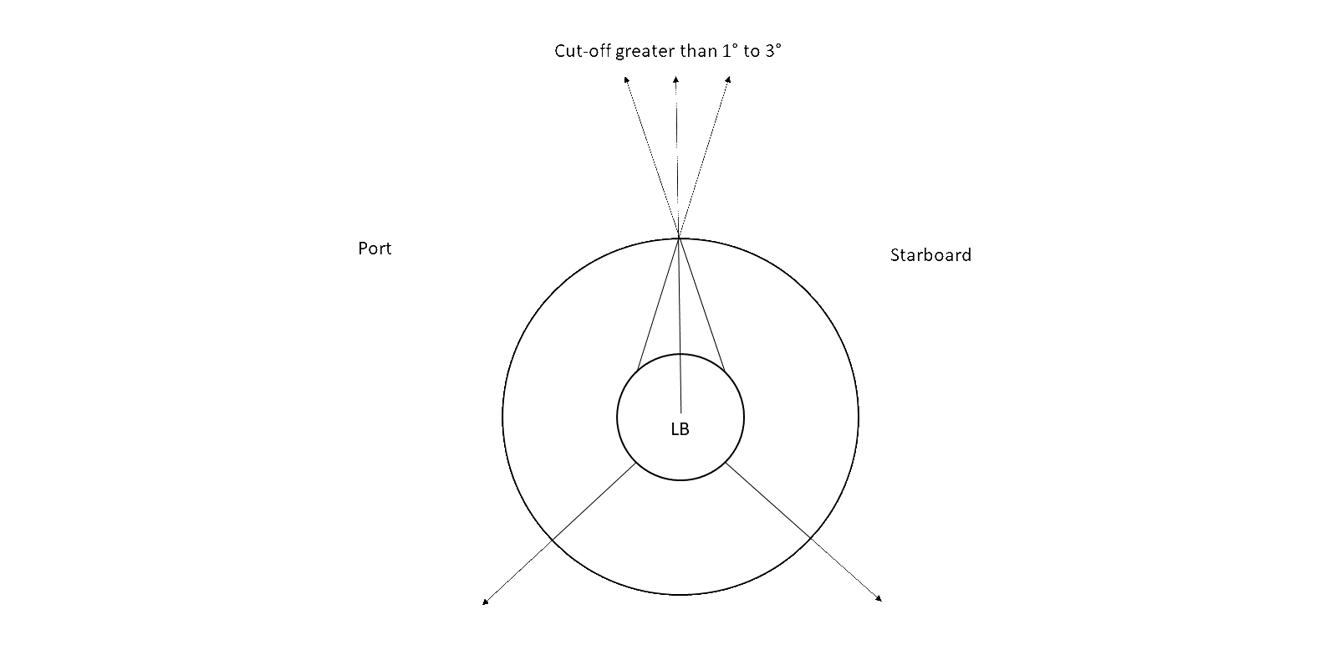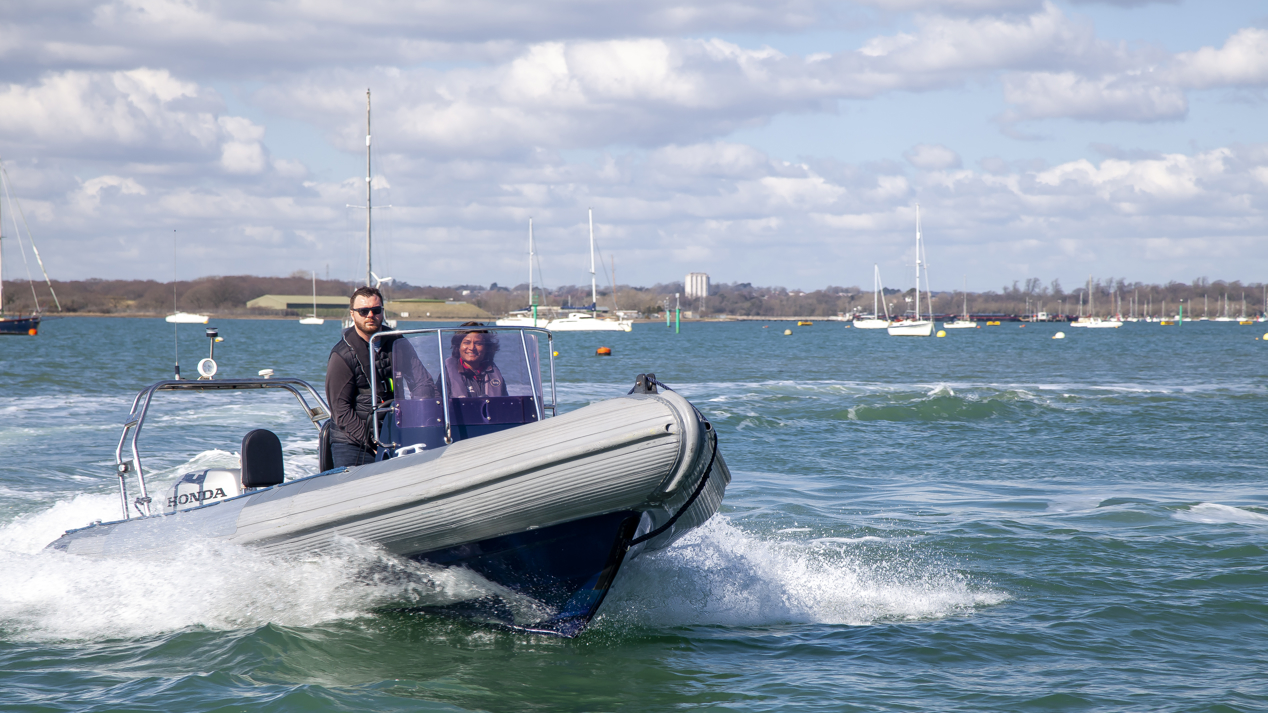Navigation lights
Lights and shapes are used to indicate the status of a vessel at sea and the direction in which a vessel underway is moving, to allow the correct action to be taken by all the vessels when in sight of each other
The International Regulations for Preventing Collisions at Sea (COLREGs) not only prescribe the actions of each vessel in all states of visibility, they also stipulate the lights that should be fitted to a vessel, the shapes that should be available and the sound signals and signalling equipment necessary, to allow a vessel to make its status clear at all times.
Lights and shapes
The rules concerning lights must be complied with from sunset to sunrise and at all other times in restricted visibility. Shapes are used during daylight hours to indicate a vessel's status and to avoid doubt or confusion. The prime example is the requirement for a yacht that is motor sailing to display a motoring cone (a conical shape apex downwards) in the forepart of the vessel.
The rules also stipulate the exact colour of the lights, their intensity, the minimum distance each light must be visible for, and their position on the vessel. The requirements vary and the rules must be read in full, to completely understand one's obligations. A summary of the rules (in tabular form) is designed to help a pleasure boat owner understand his or her obligations with regards lights and shapes.
It is important to remember that there have been significant advances in technology since the rules were written. It is quite feasible and very desirable to make yourself visible for more than just a mile or two, when you consider that a ship today can cover that distance in little more than a couple of minutes, providing it with insufficient time to identify that it is on a collision course with you, identify that it is the give way vessel and take the necessary action. This is why the RYA recommends that small craft sail defensively, by which it is meant that you avoid creating the situation where the ship is the give-way vessel that may be on a collision course and in close quarters with you in 'stand on' position.
Spare bulbs of the correct wattage should always be carried on board, together with other electrical spares such as fuses and an emergency alternative to your fixed navigation lights in case they should fail.
LED lights for navigation
LED light sources are an attractive proposition for any yachtsman who wishes to reduce power consumption and extend battery life. However, caution is needed to ensure that your navigation lights remain compliant with COLREGs in terms of colour, cut off angles and range.
All navigation lights must:
- Comply with the requirements in COLREGS (1972), Annex 1.
- Function satisfactorily without introducing intolerable electromagnetic disturbances to other equipment in the environment in which they operate.
Potential pitfalls
LED are electronic light sources that produce colour according to the type of semiconductor used. Simply replacing an incandescent filament bulb with an LED may cause a problem. Many LEDs are made from cheaper semiconductors that tend to give a ‘hard’ bluish light. When such bulbs are placed behind conventional navigation light lenses the observed colour may be considerably different from the colours required in COLREG. This can be cause changes in colour that mean that they are not recognisable as navigation lights and the lens itself may reduce the observable range or luminous intensity of the light.
Heat and cold can also affect the LED colour, so it is important to check your LED lights to ensure that the colour remains correct.
As well as colour, cut-off angles must not be altered. COLREG states that: ....In the forward direction sidelights as fitted on the vessel shall show the minimum required intensities. The intensities shall decrease to reach practical cut off between 1 and 3 degrees outside the prescribed sectors. That is why an incandescent bulb has a vertical filament. If the incandescent bulb is replaced with a ‘hedgehog’ LED bulb or you buy an LED replacement navigation light unit where the LEDs are arranged around the circumference, it is possible that the horizontal cut–offs, shown in the diagram, will be exceeded.

LED failure can be caused by voltage spikes, shorting or mechanical failure inside the lamp due to moisture, impact, shock and vibration. Not all products are developed to withstand the harsh environment they may have to survive on a boat.
Excessive heat can cause LED brightness to decline significantly due to inadequate thermal and electronic control. This could mean that after time and the elements a two-nautical mile LED lamp may only be bright enough for a few hundred metres.
The electronic circuitry that regulates the current of the LED over a range of input voltages protects it from spikes and reverses polarity. However, unless this circuitry is filtered the electromagnetic disturbance generated by the LED light power source may exceed a level which could prevent other electronic equipment on board from operating as intended.
Although all LED lights are required to comply with the EU Electromagnetic Compatibility Directive, simplistically such interference can only be minimised by good design and filtering, but it will never be completely eliminated.
Physical separation is the easiest and often most effective protection. If you have fitted LED navigation lights at the masthead only centimetres from your other aerials, then this might well affect the performance of other electronic equipment.
A CE mark may mean nothing other than compliance with the EU Electromagnetic Compatibility Directive. All of these problems must be assessed against a technical standard if they are to provide assurance for the user.
What to buy
In 2012, the RYA proposed that an International Standard that specified requirements and testing for navigation lights with permanently fixed LED light sources should be developed for small craft of up to 24 m LOA. As a result the standard, (EN ISO 19009:2015 Small craft - Electric navigation lights – Performance of LED lights) was published. The introduction of this standard provided an easily recognised means for potential buyers to make an informed selection as it provides a means for LED navigation light manufacturers to show that their products are of adequate quality, conform to the COLREG requirements and will perform reliably.
It is an inescapable fact that decent LED units may not be cheap. However, the cost may be acceptable compared with the lifecycle costs and the obvious advantages of knowing that something is performing as it should.
Sound signals
There are three devices used for sound signalling a gong, a bell and a whistle.
- A vessel of 12m or more in length shall be provided with a whistle
- A vessel of 20m or more in length shall, in addition, be provided with a bell
- A vessel of 100m or more in length shall, in addition, be provided with a gong
The whistle, bell or gong shall comply with the specification in COLREGs 1972 Annex III, although the bell or gong may be replaced by other equipment having the same sound characteristics, provided that manual sounding of the required signals shall always be possible.
Vessels of less than 12m in length are still required to have an efficient means of making sound signals, but they do not need to comply with the technical details for sound signal appliances in Annex III of the COLREGs.
As well as being used to show the presence of vessels in reduced visibility and their status, sound signals prescribed within the COLREGs as manoeuvring and warning signals. Sound signals may also be supplemented with light signals as detailed in the rules.
Signals to attract attention
To attract the attention of another vessel, the rules permit any light or sound signal, that cannot be mistaken for an authorised signal or an aid to navigation, with the exception of high intensity intermittent or revolving lights, such as strobe lights, which are to be avoided.
In particular directing the beam of a search light in the direction of the danger (being cautious not to embarrass any vessel), is suggested in the rules.
Pleasure craft are encouraged to carry a spotlight or powerful torch (not forgetting the spare batteries and bulb) which they could shine towards the bridge of a ship (being mindful of their night vision) to attract their attention, for example if they are a danger to you and you feel that they are not aware of your presence.
Hand-held white flares are also designed for the purpose of collision avoidance. A white flare is not a distress flare. It is used to draw attention to a vessel's presence, particularly in a potential collision situation where the other vessel does not appear to have seen you.
Explore our safety hub
For more information about staying safe on the water visit the RYA Safety hub.

